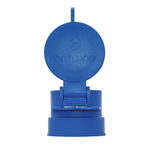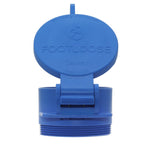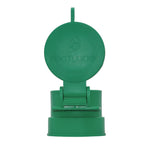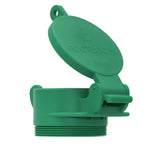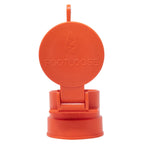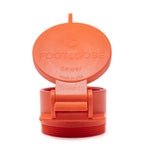You have no items in your shopping cart.
If you have an RV campground, you know that providing a facility for guests to dump their waste is a necessity. Whether you provide one dump station location or give each camping site its own receptacle, this is an important part of your infrastructure.
However, building the perfect RV dump station is more than just digging a hole and gluing some PVC. You need to consider the engineering elements and even some legalities.
How to build one
There are a few steps you should take to ensure you get a station that works.
- Research - find out if there are any limitations in your area by contacting a plumber or your municipality. Ask about bylaws that may impact the design or location of your dump station.
- Plan - look around your property and determine the best location for your dumpsite. Consider how close guests will be able to park their RVs to the site.
- Prepare - before you begin to build it, get all the tools and supplies you need.
- Build it - depending on whether you are connecting to a septic tank or your municipal sewer line, the steps to building it will be different. Once you know the rules, have a plan design, and all your supplies, you are ready to start building it.
RV dump station plans
Here are some of the basic requirements that you need to include in your plans:
- Concrete pad - the drain should have a concrete pad around it that is sloped. This helps prevent the wastewater from spilling on the ground and becoming environmental contamination.
- Self-closing cap - the drain is required to have a tight-sealing, self-closing cap such as the Footloose RV site sewer cap.
- Flushing water - you should ensure that there is a water source that allows you to flush the dump station pipes. A sign shall be posted "Not for Human Consumption Use for Flushing and Cleaning Purposes Only."
- Service Access - make sure you plan access to the system in multiple places in case service is required. Close off these access points using manhole covers. They are available in a many sizes and configurations. Some have lids that can be locked, some lids are watertight, and some have special designations so service personnel know what where to access the system.
- Fluid Control - many sewer and water systems require access where waste can be removed from sections of the sewer network. Capping these sections is important to protect the environment while still allowing service access. Well / sewer plugs are available in several designs and configurations and should be considered in the design of your system.
Engineering requirements
The practical requirements may vary from state to state but some of the most important elements you should build into your dump station include:
- Have at least one dump station for every 100 campsites. For those campgrounds that offer both tent and RV sites, you only need to account for the RV sites.
- Each RV dump station needs to have designated water for flushing. There should be clear signs indicating the water is for flushing the line, not for drinking.
- Extra measures in place to protect the water supply in the area. This means you need to have equipment that will prevent backflow at the dump station.
- Be equipped with a tank that can hold a thousand gallons of water. However, if you are connecting to a sewer line rather than a septic tank you need to ensure that the piping is maintained and leak-proof.
- Each dump station should have the right hoses and caps that prevent the site from being tampered with. Sewer caps like the footloose RV site sewer cap offer high-quality and tamper-free security for your RV dump station line.
Is it legal to dump raw sewage?
When it comes to disposing of black and gray water, it is illegal to just dump it anywhere. That includes anywhere in the wilderness. Our wastewater can cause damage to the environment. It can also pollute the water that wildlife depends on for survival.
That is why there are designated RV dump stations where campers can safely dispose of their RV’s wastewater. If anyone is caught dumping RV wastewater illegally, they could face some heavy fines and even be prohibited from camping at that site again. For a quick guide to camping ethics visit the National Park Service’s “Leave No Trace” guidelines.
Campsites do not have to build and maintain a dump station, but your guests will appreciate it. This can also attract campers to your location as they know they won’t have to travel off the site to clean out their tanks. You may add the location of your new or existing dump station on Sanidumps website.
Benefits of having a good RV dump station
There are a number of good reasons to consider building your own RV dump station. These include:
Extra revenue
By allowing your guests to dump black and gray water on your property, you will be able to earn some extra revenue. Not every site offers RV dump stations as an amenity to guests and your campsite will stand out if you decide to build one. Most sites already have access to their local municipalities sewer lines, which makes adding a tank for your RV wastewater simpler and more affordable in the long run.
Convenience
Locating a designated RV dump station can be time-consuming and take away from the enjoyable experience that traveling and camping are meant to be.
If your campsite relies on the municipal sewer grid, building an RV dump station is still possible. You will need to find the short pipe that is connected to the larger sewer line. This is called the cleanout.
These pipes often have a safety cap that can be removed to check or clean the line. You will need to open up the line before you connect your RV to the sewer for dumping.
Once you have identified the cleanout, see how close an RV can park to that pipe. It is ideal if your wastewater pipe can connect directly to this pipe. Then your RV dump station is set.
If you want to build an RV dump station that integrates with a septic tank on your property, there are a few things you will need to consider.
Cleanout pipe - If you are able to access the cleanout pipe, simply place your output hose into it. However, if you are not able to access the pipe, you can put the input pipe between your house and septic tank. You may also opt to directly drop your output hose into the septic tank. If you do this, try and get the hose a few feet under the water to help the solid waste settle on the bottom of the tank.
Lastly, your septic tank relies on specific bacteria and microorganisms to break down the waste. Using soaps or detergents in your RV can destroy those bacteria and microorganisms because they end up in the gray water.
Look for environmentally-friendly soaps and detergents that won’t harm these essential septic tank elements. You may also want to make a note for your guests about the type of soap they should use.
Conclusion
Having an RV dump station on your campsite can be a convenience for those who love to travel and it can also bring in some extra revenue for your business. Visitors will enjoy not having to worry about finding a dump station along their route and you can attract other campers in the area to your site.
Whatever the reasons you want to build your own RV dump station, having the right equipment and tools are key to ensuring you have a dump option that works and avoiding expensive repairs down the road.
If you are looking at building your own RV dump station, be sure that you have all the right supplies you’ll need, including the Footloose RV site sewer cap to secure the line.
Photo by Luke Besley on Unsplash



